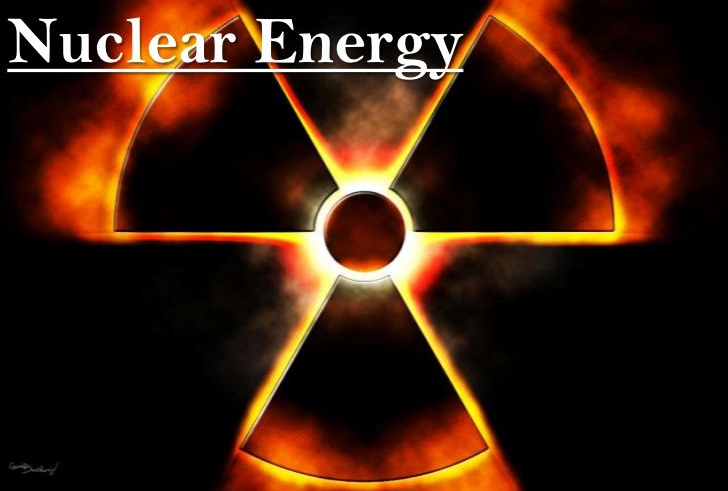
EIA: NUCLEAR ENERGY WILL UP

EIA - EIA projects that global nuclear capacity will grow at an average annual rate of 1.6% from 2016 through 2040, led predominantly by countries outside of the Organization for Economic Cooperation and Development (OECD). EIA expects China to continue leading world nuclear growth, followed by India. This growth is expected to offset declines in nuclear capacity in the United States, Japan, and countries in Europe.
Electricity demand growth plays a central role in decisions to build new nuclear reactors and retire existing reactors. EIA expects electricity demand growth in China, India, and the Middle East to exceed growth in the United States, Europe, and Japan. EIA's projected higher electricity demand growth for non-OECD member countries is the result of comparatively higher growth in gross domestic product and population relative to OECD member countries.
China currently has 38 operating nuclear reactors with a total capacity of 33 gigawatts (GW), including 2 GW of new capacity added in 2017 with the completion of the Fuqing-4 and Yangjiang-4 reactors. An additional 19 reactors, with a total capacity of 19.9 gigawatts (GW), are currently under construction, accounting for more than a third of all nuclear projects under construction worldwide. In total, China plans to install 58 GW of new nuclear capacity, which EIA expects to be completed by 2024. By 2032, China is expected to surpass the United States as the country with the most nuclear electricity generating capacity.
India has the world's second-largest population, behind China, and the highest projected electricity demand growth. India currently has 22 nuclear reactors with a total of 5.3 GW of capacity, and 6 additional reactors with a combined capacity of 3.9 GW are currently under construction. India recently entered into an agreement with Russia to build two more reactors at India's Kudankulam plant.
The United States currently operates the world's largest nuclear fleet, with a total capacity of 100 GW from 99 reactors. However, U.S. nuclear capacity is expected to decrease to 88.2 GW by 2040, as several plants have announced intentions to retire before their scheduled license expirations. Two new reactors, Voglte Units 3 and 4, are currently under construction, while construction on V.C. Summer Units 2 and 3 has been suspended.
In Europe, construction of Finland's 1.6 GW Olkiluoto-3 is nearing completion. The reactor is expected to begin operation in 2018 and will be Europe's first new nuclear power station in 15 years. However, total nuclear capacity in Europe and Eurasia is expected to decline, as policy decisions to phase out or reduce the nuclear generation share in countries such as Germany and France offset new capacity in non-OECD countries such as Russia, Ukraine, Belarus, and Romania.
After announcing its intention to phase out all nuclear generation in response to the 2011 Fukushima accident in Japan, Germany will have shut down 10 reactors by the end of 2017 and is expected to retire its last reactor in 2022. Earlier this year, France ratified a 2015 law that reduces the share of nuclear generation from 75% to 50% by 2025.
Japan currently has 42 operable reactors with a combined capacity of 39.8 GW. However, only five of these reactors have been restarted following shutdowns in the wake of the Fukushima accident. Japan's Nuclear Regulation Authority (NRA) has given preliminary approval for 9 additional restart applications, with another 12 currently under review. Four reactors have already received final approval from the NRA and are expected to restart in 2018, and the remaining 12 reactors are expected to be retired by 2040.
-----
Earlier:

2017, October, 4, 23:45:00
GAS IS ESSENTIALAPI - “The increased use of natural gas in electric power generation has not only enhanced the reliability of the overall system, but it has also provided significant environmental and consumer benefits. The abundance, affordability, low-emissions profile and flexibility of natural gas and natural gas-fired generating units make natural gas a fuel of choice. There is no question, however, that the bulk power system will continue to rely on multiple fuels, including natural gas, nuclear, coal, hydro, wind and solar, as projected by the Energy Information Administration. |

2017, February, 10, 18:35:00
SOUTH KOREA'S LNG DOWNBut Lee said that South Korean demand for LNG would keep falling in the short-term due to increased electricity output from nuclear and coal-fired power plants. The country is the world's second-biggest LNG importer after Japan.
|

2015, November, 18, 19:35:00
U.K. ENERGY PRIORITIESThe U.K. government will make keeping the lights on the top priority with natural gas and nuclear power playing a central role in that goal, Energy and Climate Change Secretary Amber Rudd is expected to say in a major speech later Wednesday setting out a new energy policy for the country.
|

2014, October, 17, 20:40:00
JAPAN: MORE GASJapan continues to import record volumes of LNG amid delays in nuclear restarts
|

2014, March, 31, 08:33:00
IRAN MORE ASIAAsia takes more Iran crude in Feb than nuclear deal allows |












